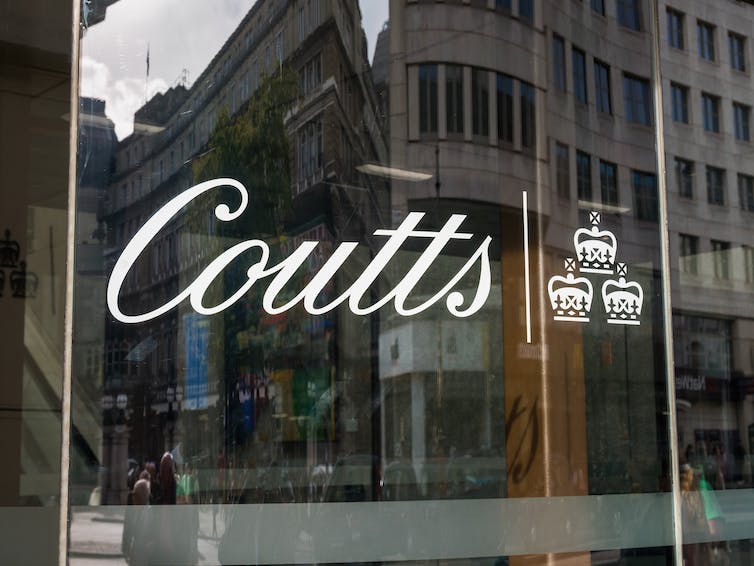After a row over the closure of his bank account earlier this year, former politician Nigel Farage has hit out at the UK financial regulator for saying it has found no recent evidence of customers being “de-banked” over their personal views.
Farage believes private bank Coutts closed his account because his political views didn’t align with the company’s values. Coutts and its parent company NatWest Group denied his accusations, saying he didn’t have enough funds to be a customer of the private bank. Farage was offered an account with NatWest’s high street arm but reportedly turned it down as unsuitable.
UK chancellor Jeremy Hunt asked banking regulator the Financial Conduct Authority (FCA) to gather data from all UK banks about the reasons for any account closures, suspensions and services denied between July 2022 and June 2023. Farage’s account was closed during this period.
Admitting the data was gathered very quickly, FCA chief executive Nikhil Rathi, said: “While no bank, building society or payment firm reported to us that they had closed accounts primarily due to someone’s political views, further work is needed for us to be sure.”
Indeed, banks being choosy about which customers they accept is nothing new. Farage’s furore has simply highlighted private bank behaviour that has persisted without much comment over centuries.
The origins of private banks
When Coutts was set up in London in 1692, banks generally acted as an intermediary to encourage trade and the free flow of goods and services – but only for the rich. Banks facilitated the greater flow of capital among this exclusive group by lending them money, discounting their bills of exchange (like an IOU note) and providing them with deposit accounts.
In the 18th and 19th centuries, banks proliferated outside London, throughout England’s provinces. London banks were typically larger and often funded international as well as national trade. Otherwise, there were few differences between London banks such as Coutts and these new country banks. They were both generally single units (no branches) and founded by a similar social group – the gentry – who initially offered financial services to their peers.
Alex Yeung/Shutterstock
Things started to change in the early 19th century with the introduction of joint stock banking. Joint stock banks tended to have much larger ownership structures comprising a local community of shareholders. Some even opened branches and offered their services regionally, rather than just to a small number of local customers. But still, these bankers only expanded their financial services to the mercantile classes – business owners, who had lacked access to banking previously.
Even then, customers of joint stock banks were carefully restricted by the commercial communities that owned them and the managers that ran them. They used self-regulation to protect their industries from “bad” traders – people who ran up debts, made poor business decisions or engaged in unethical business behaviour that didn’t align with bank owners’ values, aims and goals.
In the 1850s, for example, Sheffield steelmaker Naylor Vickers & Co. ran up high levels of debt with the Sheffield Union Bank. The bank was only saved from failure by a Bank of England intervention. Such behaviour, when it occurred, was usually not worth litigating because the courts were busy and so commercial lawsuits were often discouraged by leading judges. This meant these matters were usually dealt with by “debanking” or refusing service to offending business owners.
Joint stock banks were more inclusive than the private banks, but still didn’t serve the working classes. They applied a strict process of scrutinisation for all depositors, loan applicants and shareholders. Bank staff gathered information from the local community through their economic, social, religious and political networks.
This was an important process because these banks didn’t have limited liability – shareholders were responsible for all of their banks’ debts.
Building high street banking behemoths
Another shift occurred in the late 19th and early 20th centuries. As joint stock banks grew they became limited liability companies to protect shareholders by ensuring that they were no longer liable for all of their bank’s debts, only for an amount corresponding to the shares they held.
These banks also became national as opposed to regional. It was then that they transformed into the high street behemoths with large branch networks that we know today. In fact, the origins of NatWest, the high street banking arm of Coutts, can be traced back to joint stock banks.
Alongside this growth, bank managers could no longer use local information to assess customers. Head offices had to undertake more standard checks on those applying for accounts or credit instead, losing some lending flexibility along the way.
As British banks became more competitive in the latter half of the 20th century, they wanted more deposits so they could offer more loans. So high street banks began to target the previously “unbanked” – largely working-class people paid cash in hand. But private banks didn’t change their business models or services at this time; to this day they remain concerned with serving the wealthiest people.
What about today’s ‘unbanked’?
British banks have long excluded customers based on their membership of a certain social class or group, making Farage’s experience rather conventional when it comes to private banks. But there are over a million people in the UK without a bank account – private or high street. It remains to be seen if this lack of access can be solved by new rules, such as those recently announced by the government.
Like many other businesses, banks have long been using market segmentation to design the kinds of products, services and advertising that will attract customers they want to serve. As a result, British banking, and in particular private banking, will probably remain exclusive rather than inclusive.




